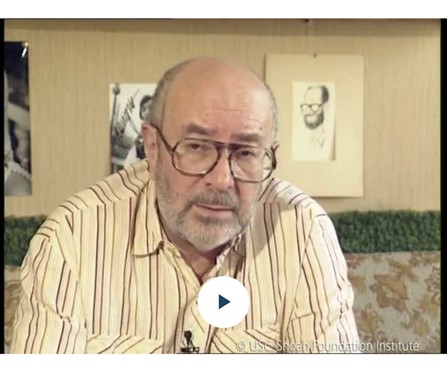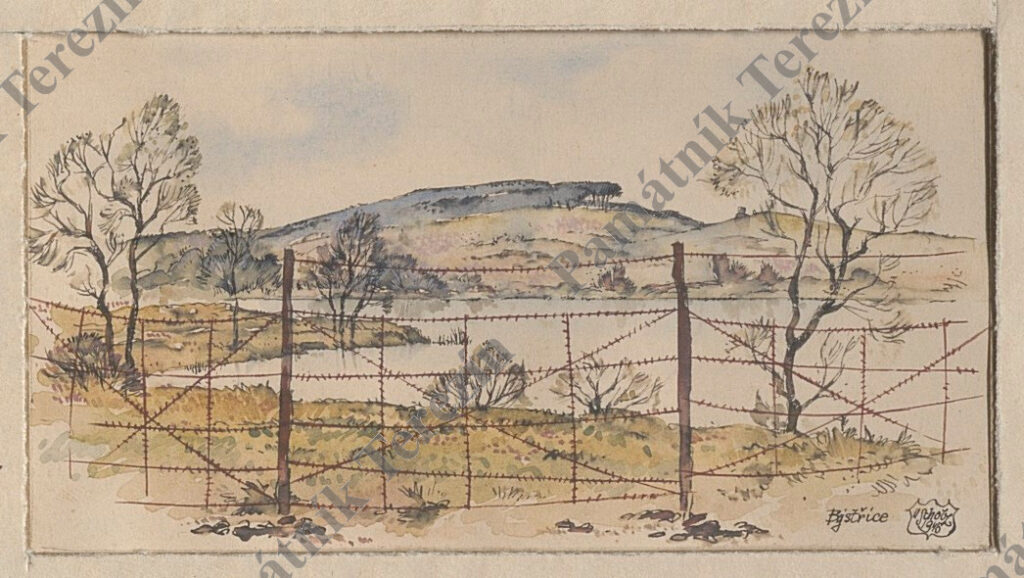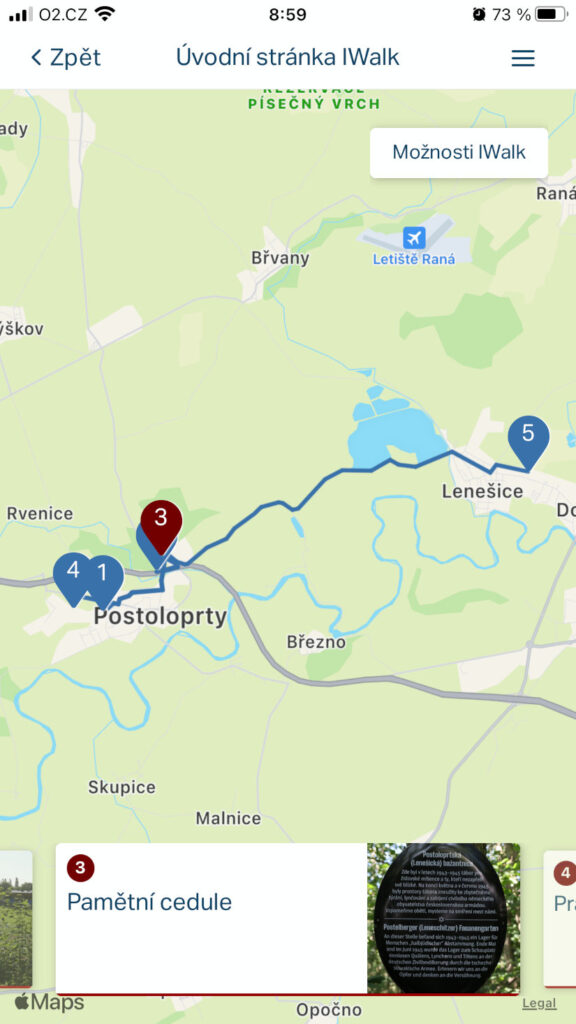The Department of Education of the Terezín Memorial, in collaboration with the USC Shoah Foundation Visual History Archive and the Open Eye organization and with financial support of the Foundation for Holocaust Victims, has developed two new educational tours within the IWalk mobile application, for the former Sonderlager Bystřice u Benešova and the Postoloprty Labor camp, two Nazi facilities operating in the area during World War II. These were intended for Jewish half-breeds and husbands of Jewish women.
IWalk is an educational application that combines the unique audiovisual testimonies of Holocaust survivors from around the world with the context of the territory in which we live. There are already several of these “walks” for the Czech Republic ‒ e.g. The Deportation Center at Radiotrh in Prague, the Terezín Ghetto, In the Footsteps of Jews at Přívoz, In the Footsteps of Pilsen Jews and others.
The testimonies of witnesses used in the application were mostly filmed in the latter half of the 1990s, and they come from the USC (University of Southern California) Shoah Foundation Visual History Archive.
This application, which is freely accessible to the general public, is available on mobile devices on Android and iOS.
I Walk for Sonderlager Bystřice u Benešova
When you open the IWalk app and select the Sonderlager Bystřice u Benešova stop, you’ll see a map displaying the stops you can visit during the walk. Each stop is marked on the map and numbered since the places are thematically linked and it’s best to follow them in their numerical order. To help you navigate, the app also includes current photos of the locations. (This is how all the stops in the application are designed.)
The IWalk for Sonderlager Bystřice u Benešova starts at the memorial to the former prisoners of the Bystřice camp with a comment on the issues of racism and the persecution of groups of people in general. The following stops take the user through other locations related to the camp’s operation – for example, the local train station, the area where the former camp was approximately located, and the shore of the Semovický pond. The user will gradually get an overall picture of the inmates’ arrival in the Bystřice camp, their everyday life, the types of punishment inflicted on them, and their cultural pursuits. The last stop at the Bystřice cemetery relates to the topic of prisoners′ escapes from the camp, and also with the life of former inmates after the war.
The application contains concise and informative texts for each location. These are supplemented by excerpts from testimonies of eyewitnesses, former prisoners of the camp, in particular Alfréd Fuchs, Jan Marek, and Ladislav Rychman. After reading the texts and listening to the testimonies, users can then answer the attached questions related to the individual topics of the walk.
Wartime events in the camp are also illustrated in the attached copies of documents, pictures and photographs from the archives of the Jewish Museum in Prague, from the Terezín Memorial archives and also from the private archive of Daniel Štěpánek, currently the deputy mayor of Bystřice u Benešova.
IWalk for the labor camp in Postoloprty
This IWalk application allows us to visit the former location of the Postoloprty labor camp during the Nazi occupation, both virtually and in person.
By means of short narratives that bring the period and location to life and by way of authentic video testimonies from four eyewitnesses (Jan Černoch, Věroslav Frodl, Petr Sgall, and Jan Švestka) the IWalk user gradually gains insight into the everyday reality in the Postoloprty labor camp. To aid in navigating the camp’s space, a map with marked stops and accompanying photographs is provided. Additionally, each stop includes questions that encourage reflection on the conditions of imprisonment and the history of the camp.
The first of the five stops brings us to the Postoloprty train station, where the prisoners arrived and from where they set out for the labor camp on foot.
The second stop takes us to the area of the former camp. Right now, though, there are two football fields here, and there’s not much to show that this was the site of the Nazi repressive facility.
The third stop is at the commemorative plaque, which gives more details about what life was like in the prison. This includes things like where prisoners lived, what they ate, who guarded the camp, and how the inmates could make contact with their fellow prisoners.
The fourth stop deals with the prisoners’ labor deployment on the construction of the runway of the airport in Žatec or in the sand pit directly in Postoloprty.
The fifth optional stop takes us to the village of Lenešice, where relatives of the inmates used to come to see them at least for a while, or to hand over packages to them. It was also the point of departure for most prisoners returning home at the end of the war.
These two stops in the IWalk app provide a comprehensive overview of the functioning of both camps: the former Sonderlager Bystřice u Benešova and the Postoloprty labor camp.
A school group can work with the application in the field under the guidance of its teacher. It is possible to write down answers to the attached questions on a mobile device and send them to the teacher.
Naděžda Seifertová and Jana Švarcová







